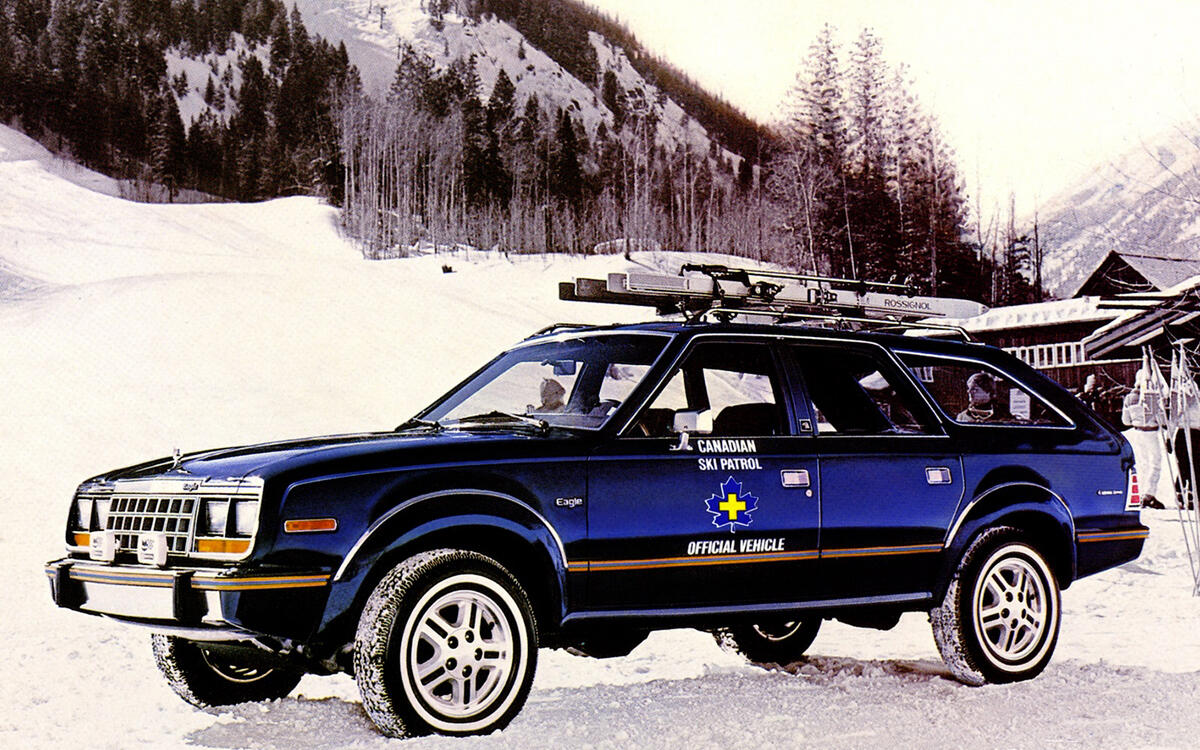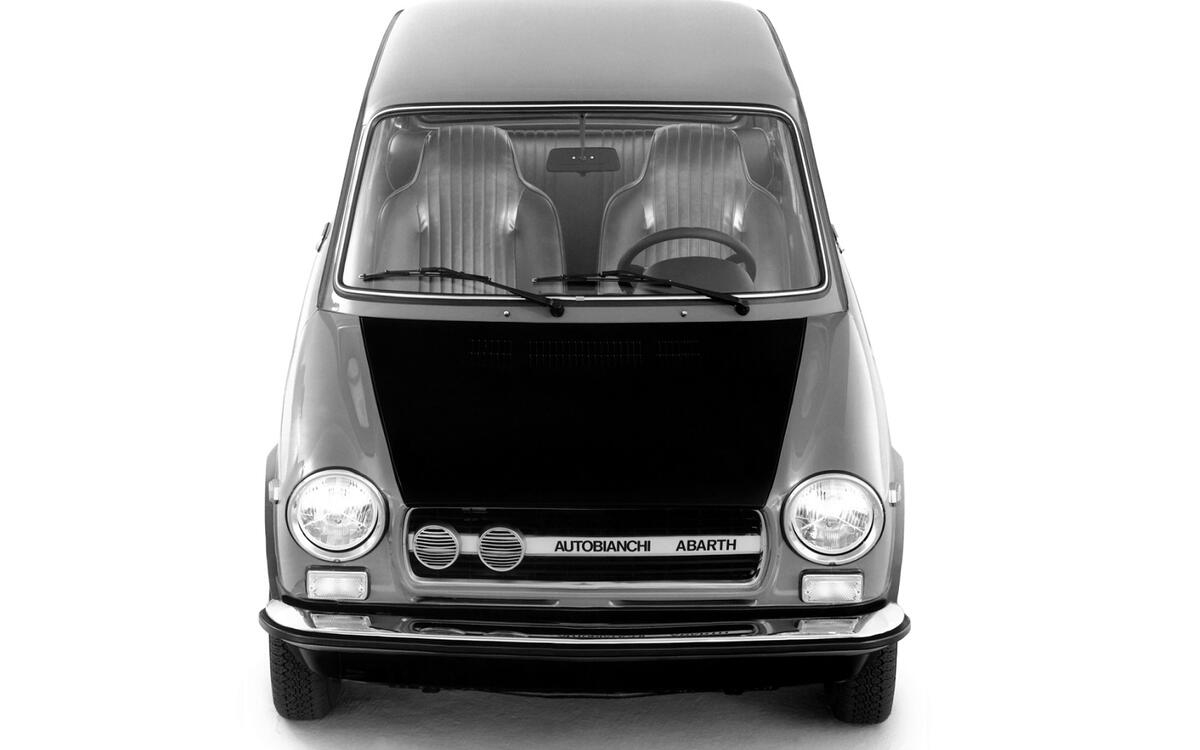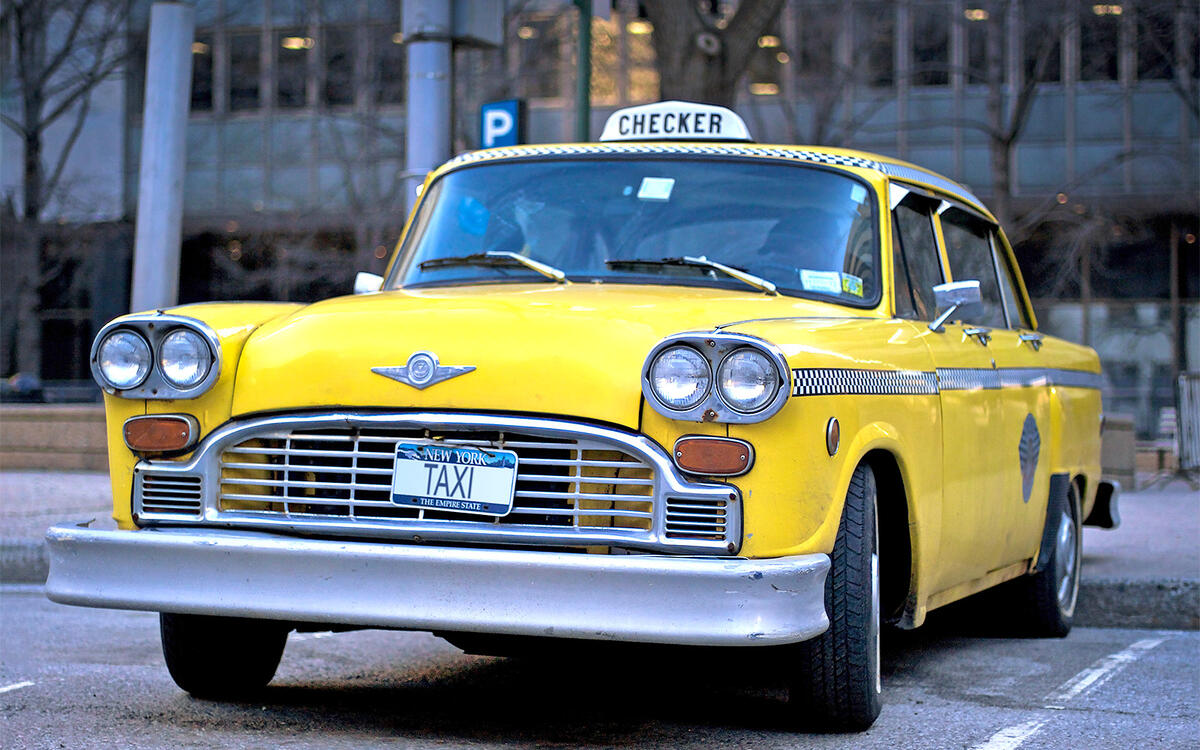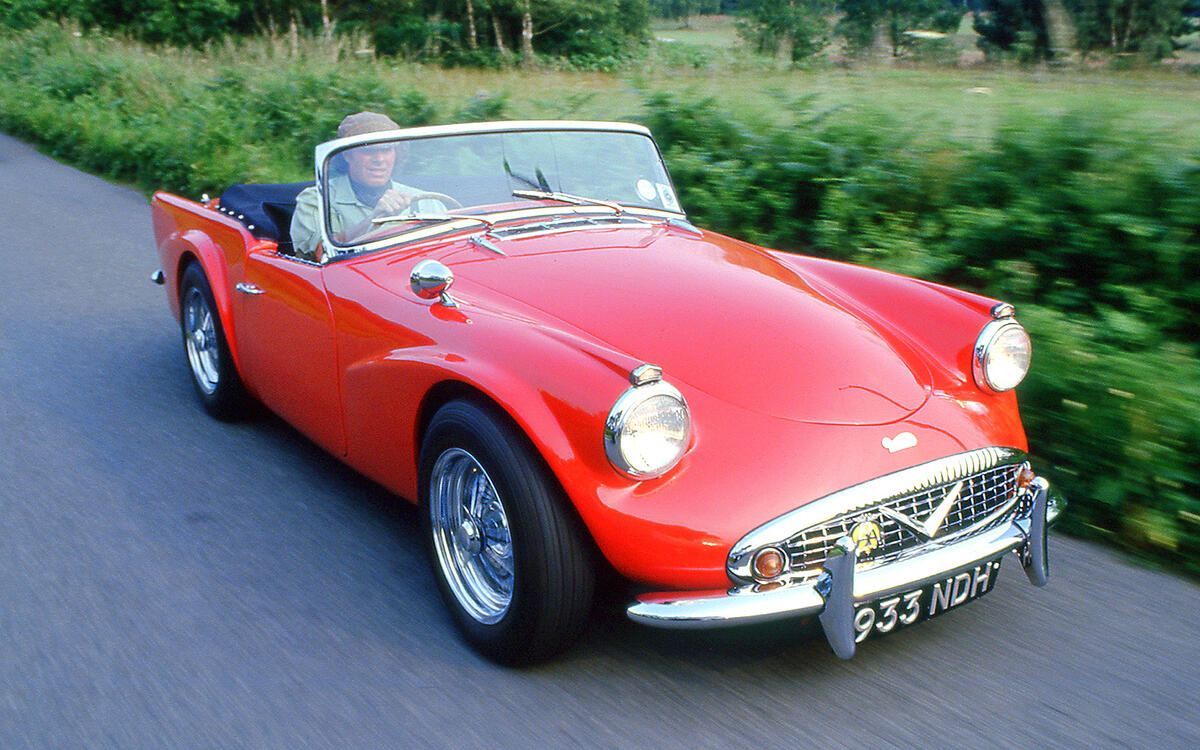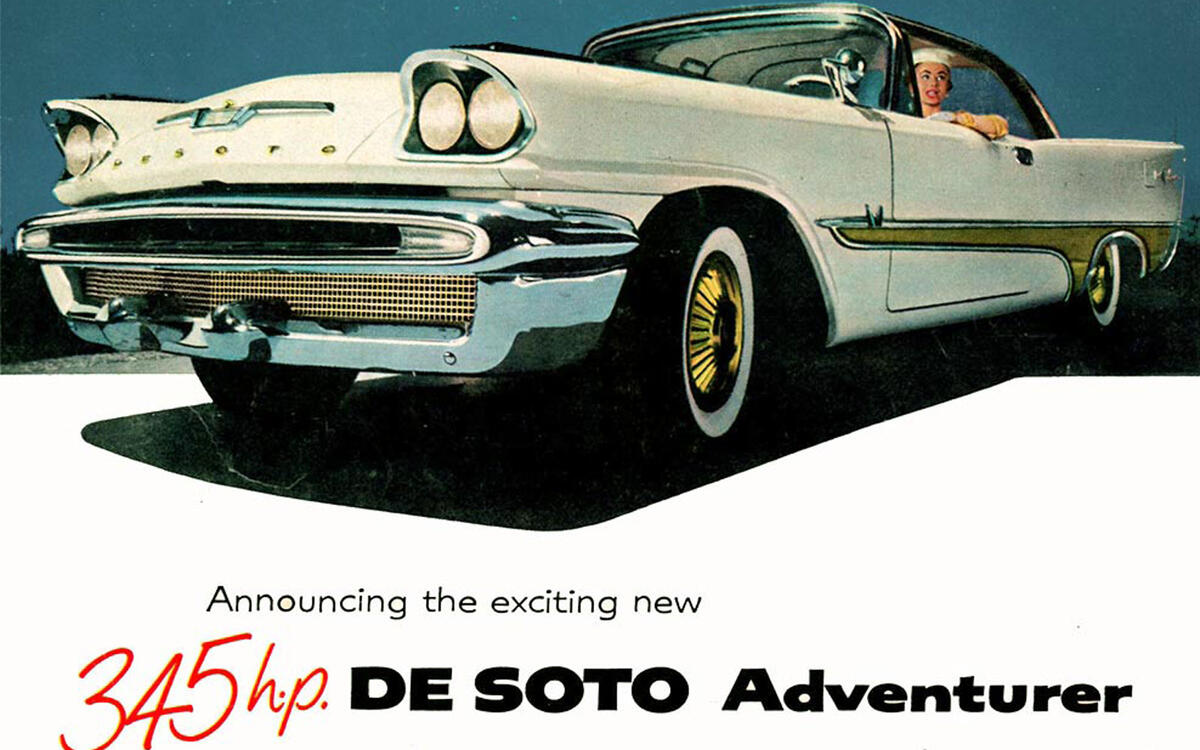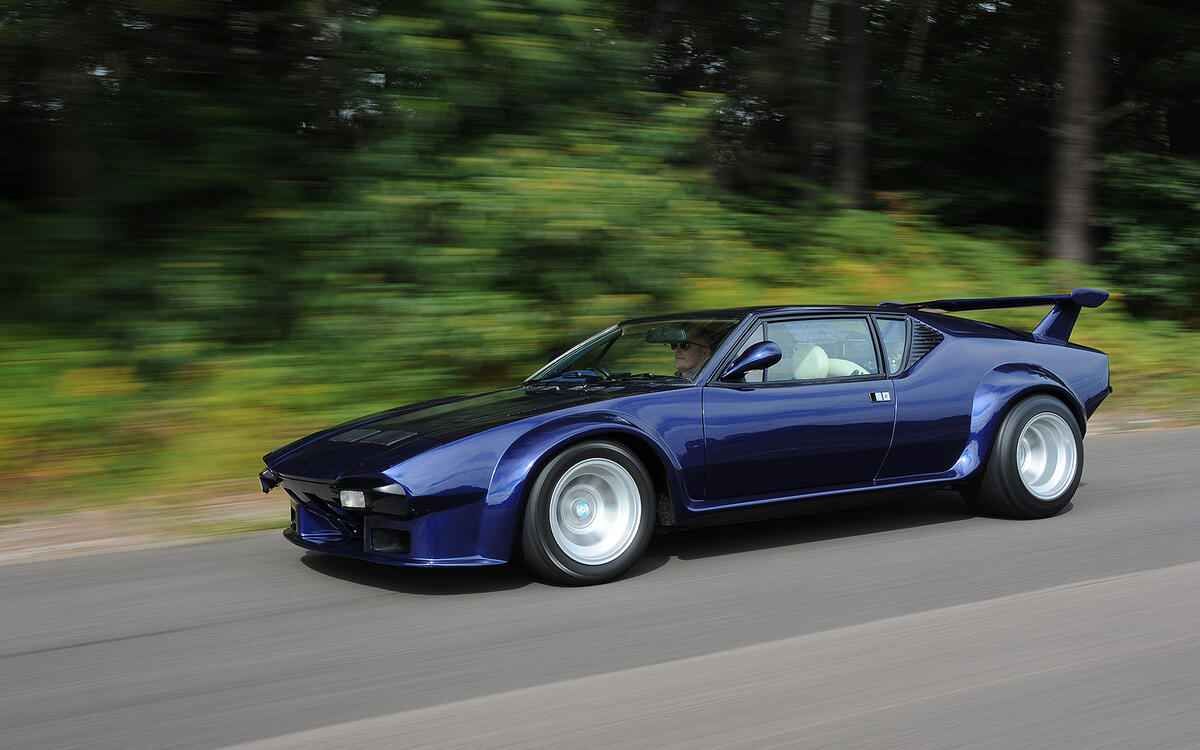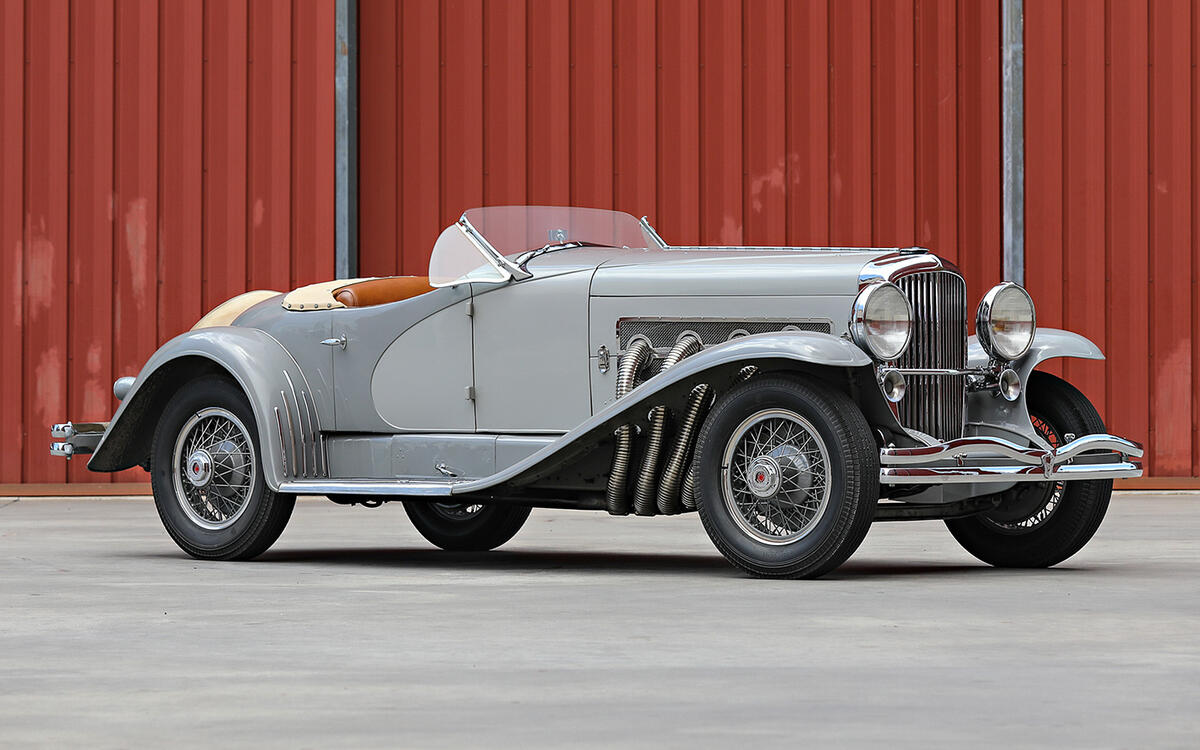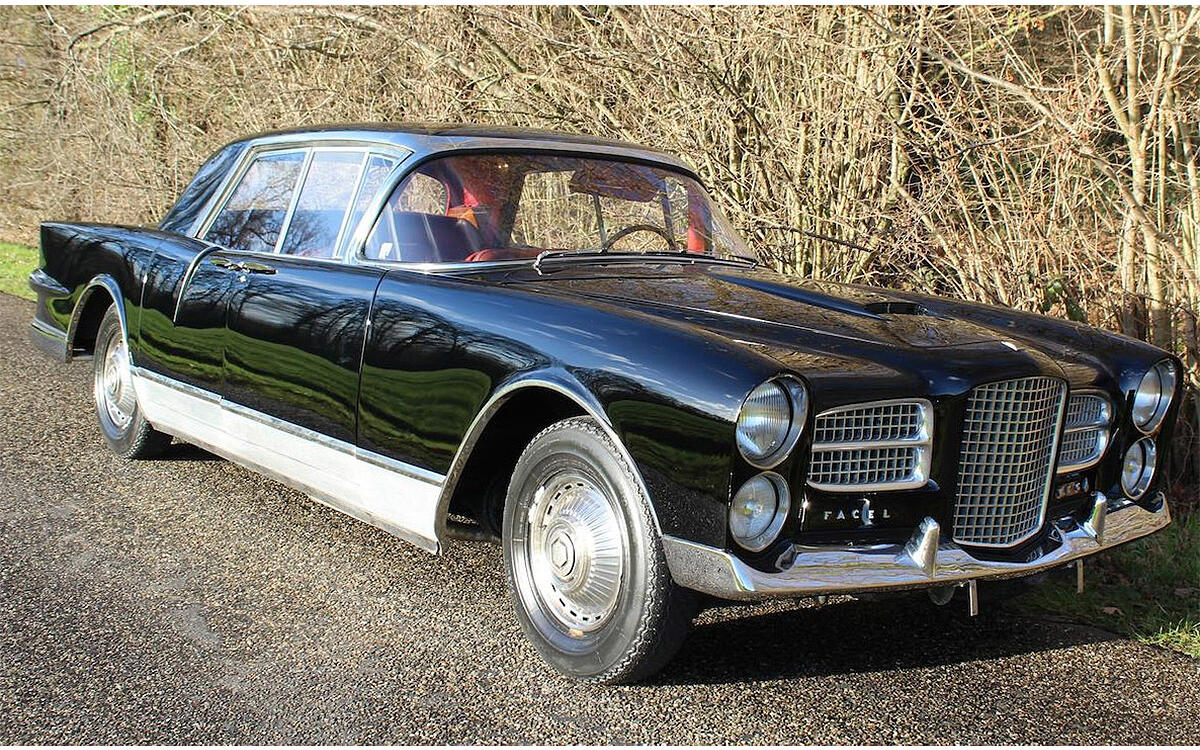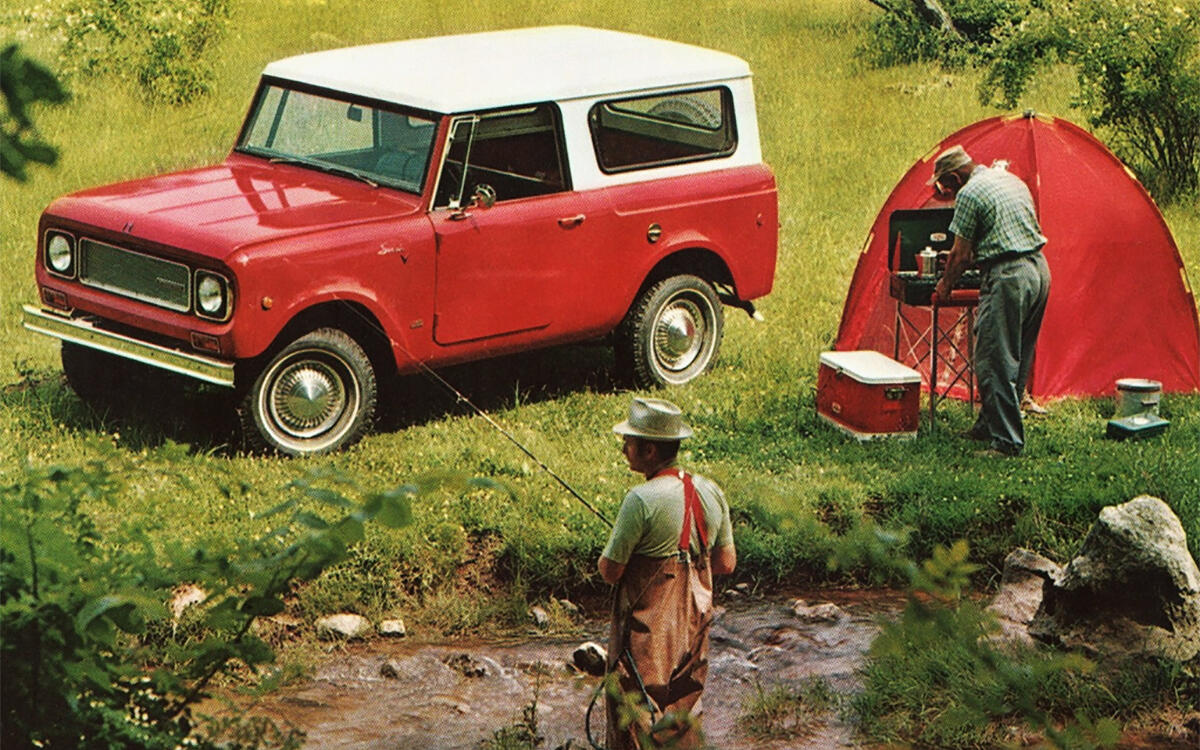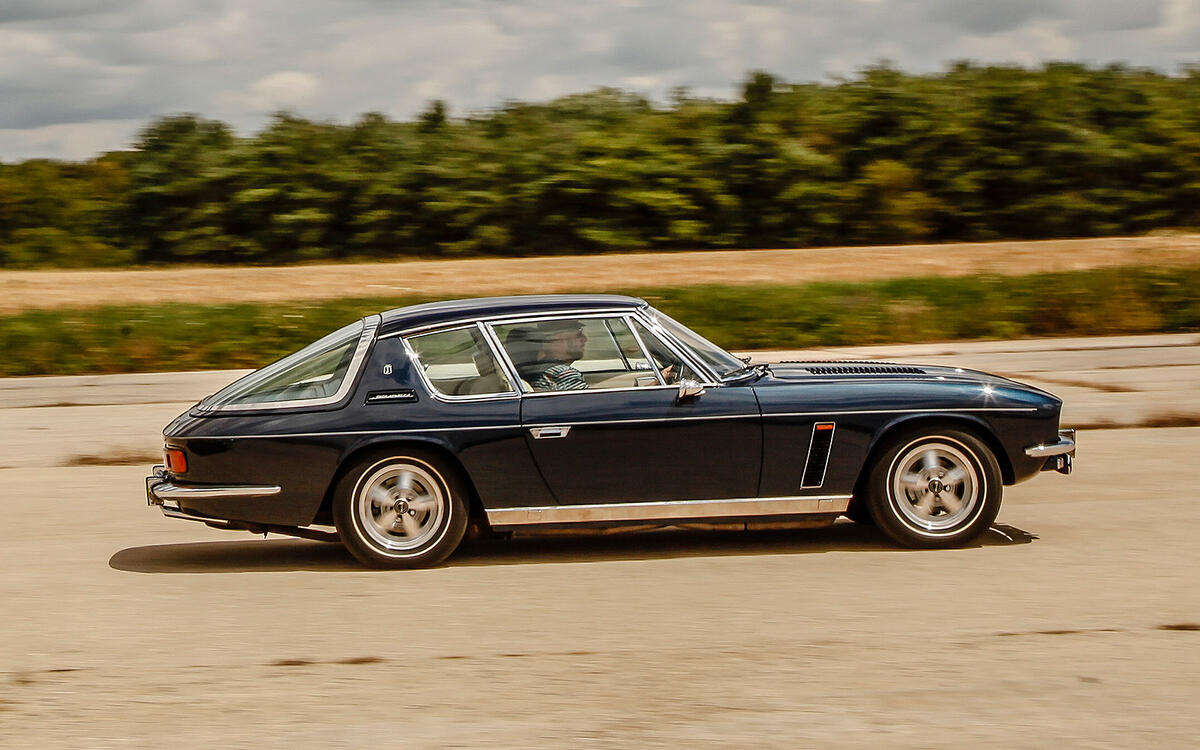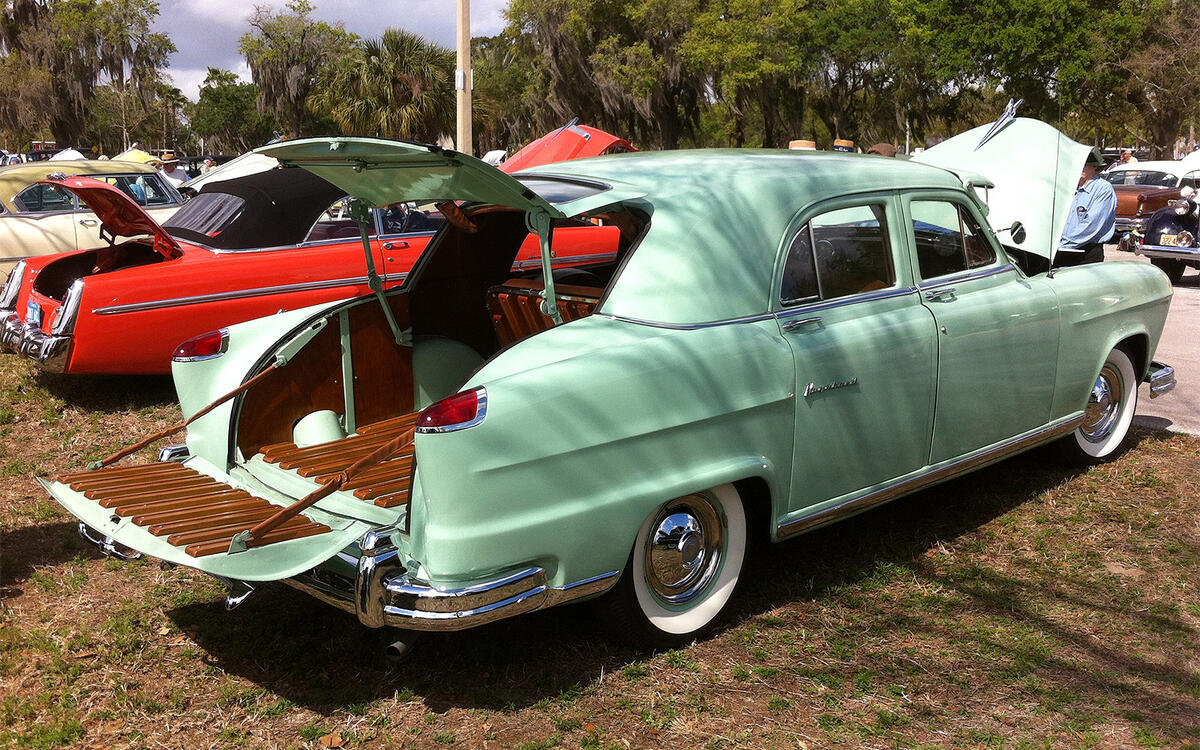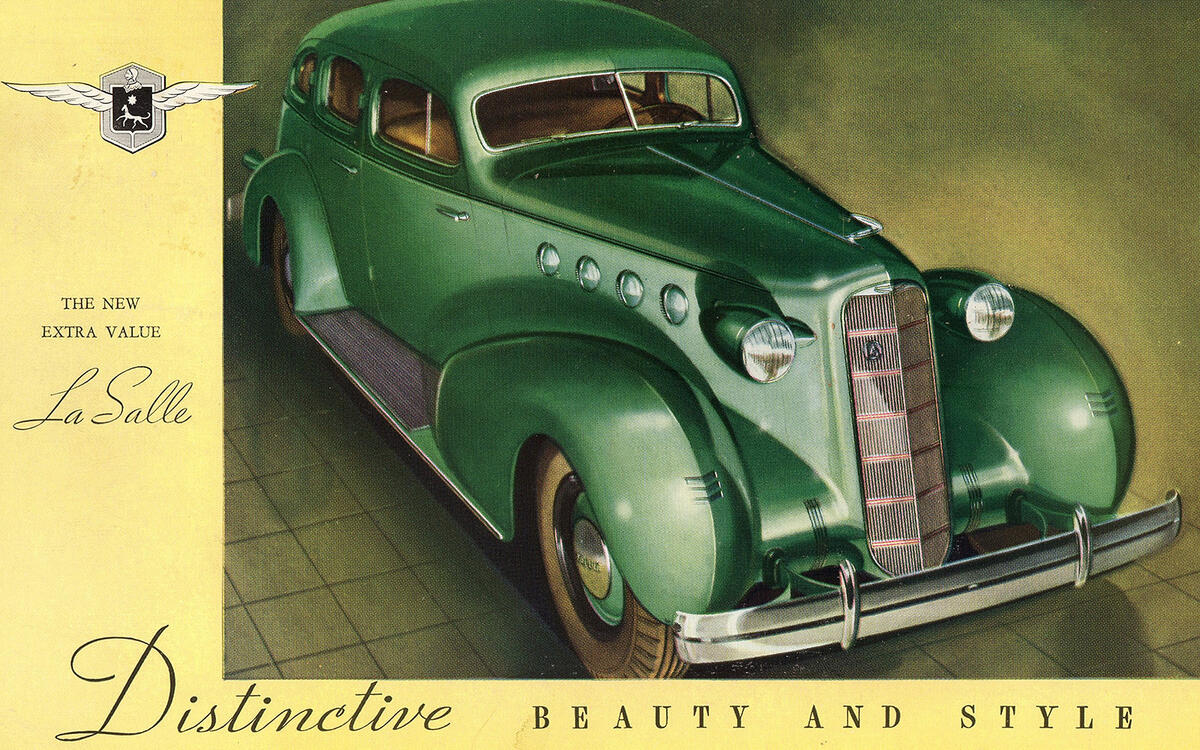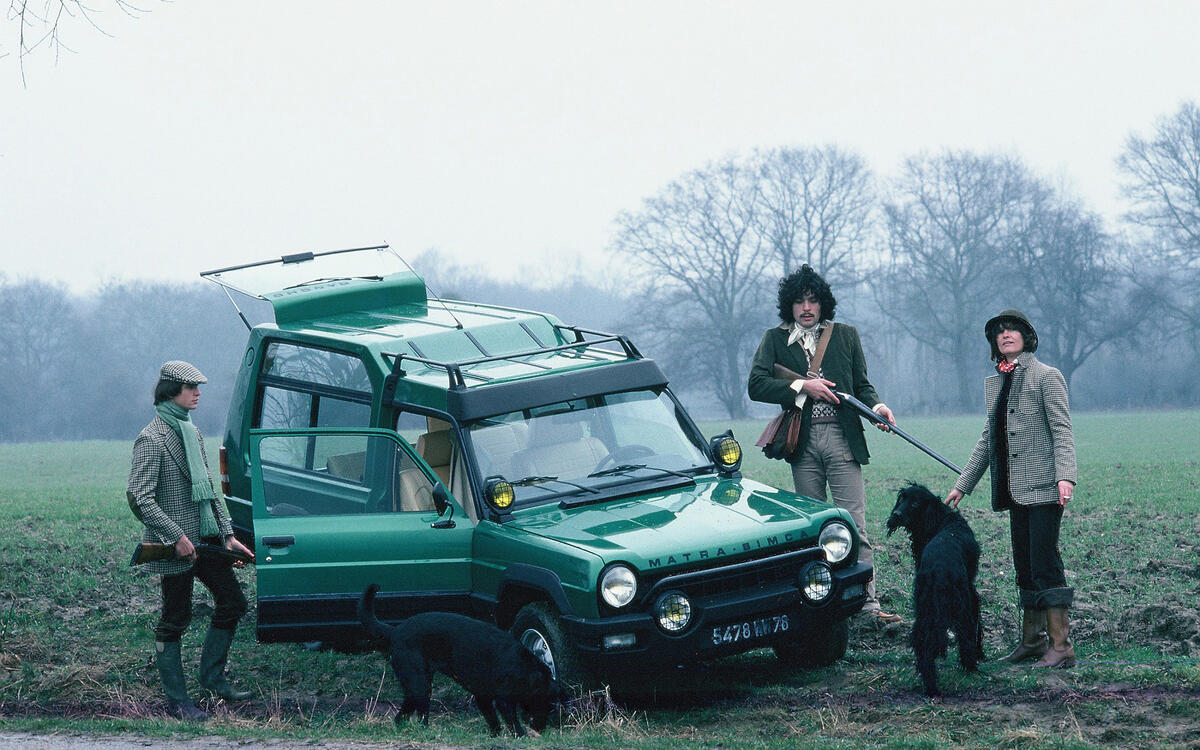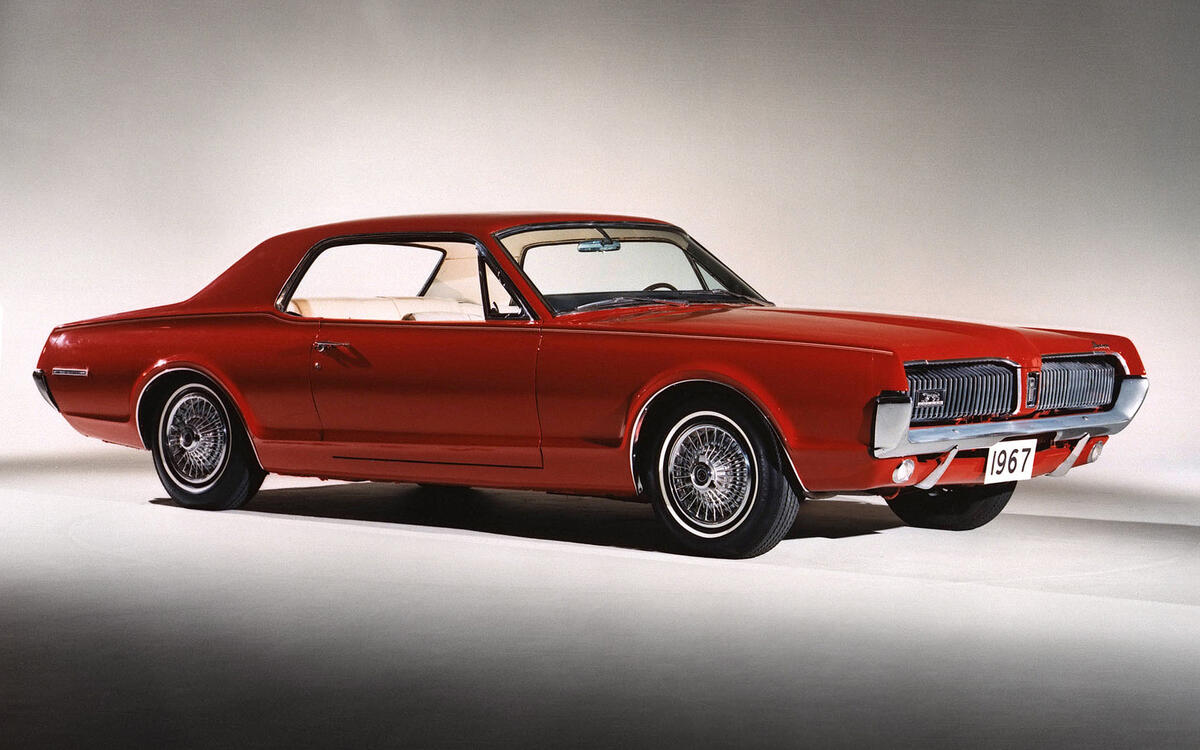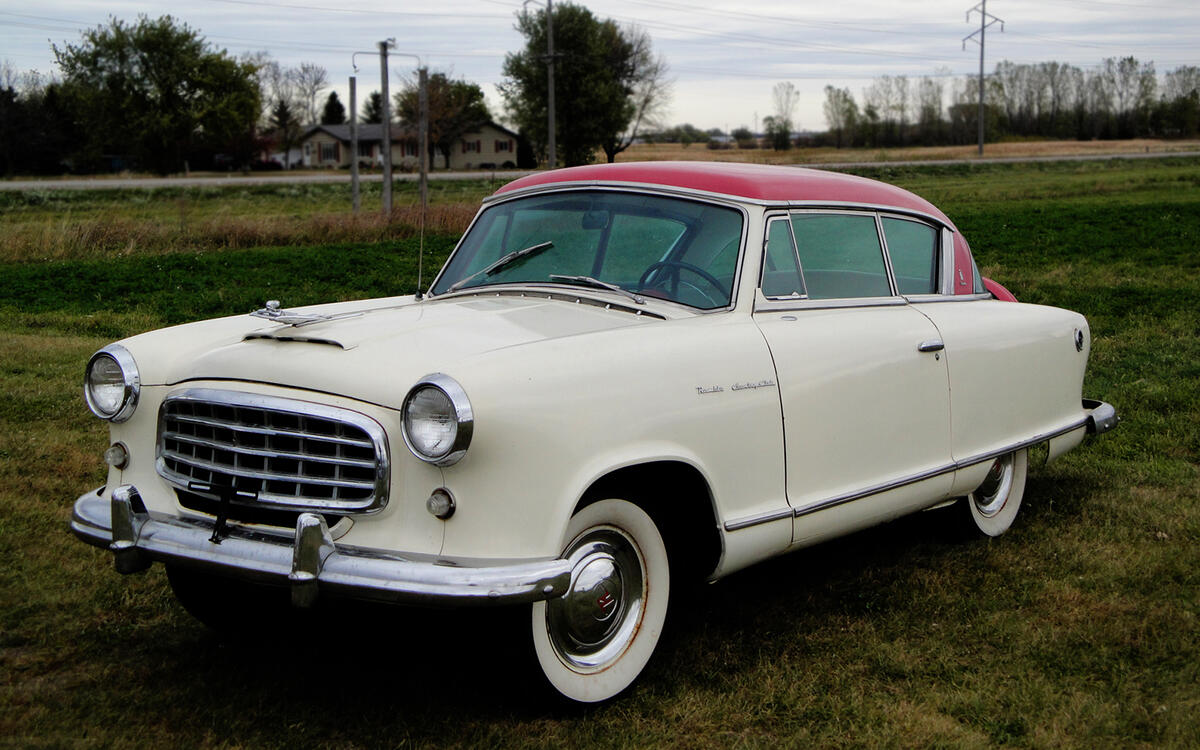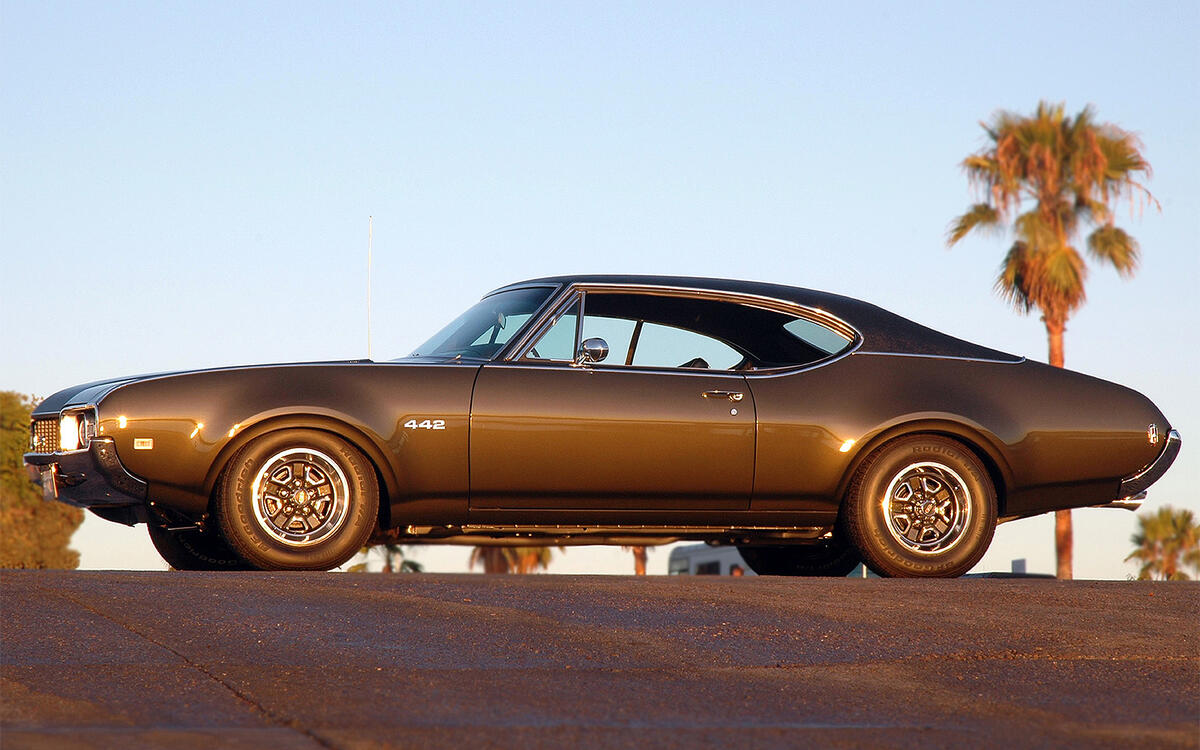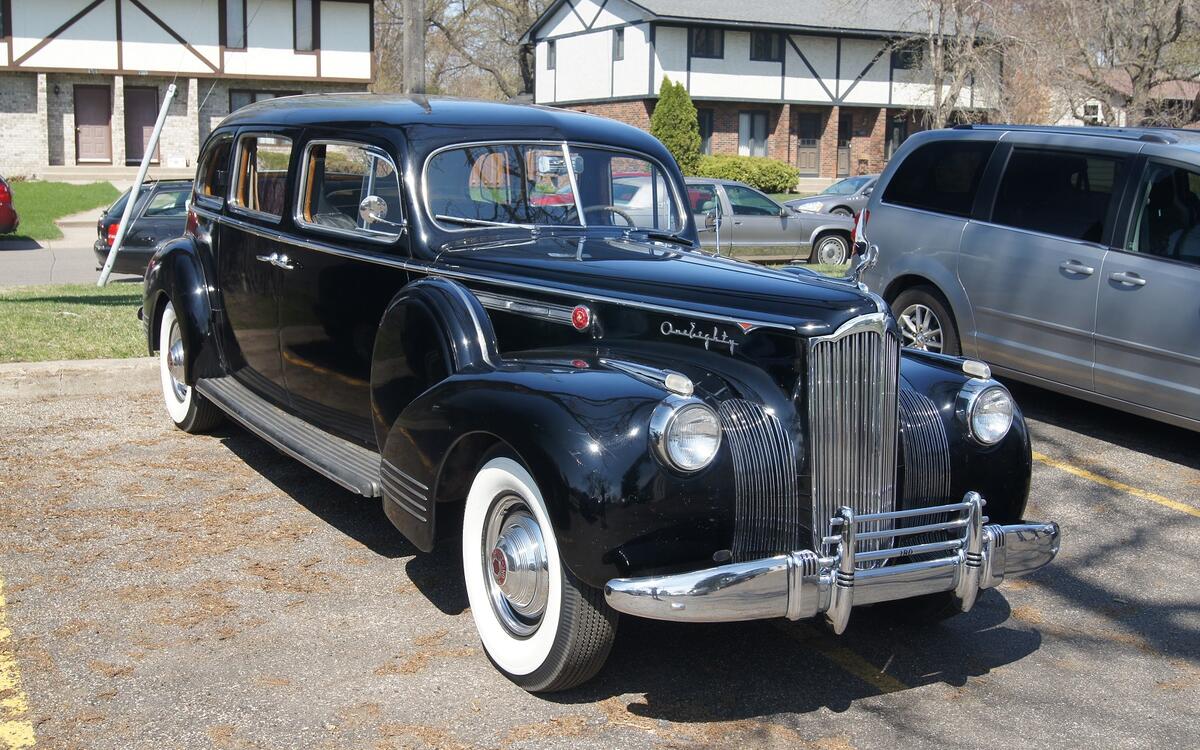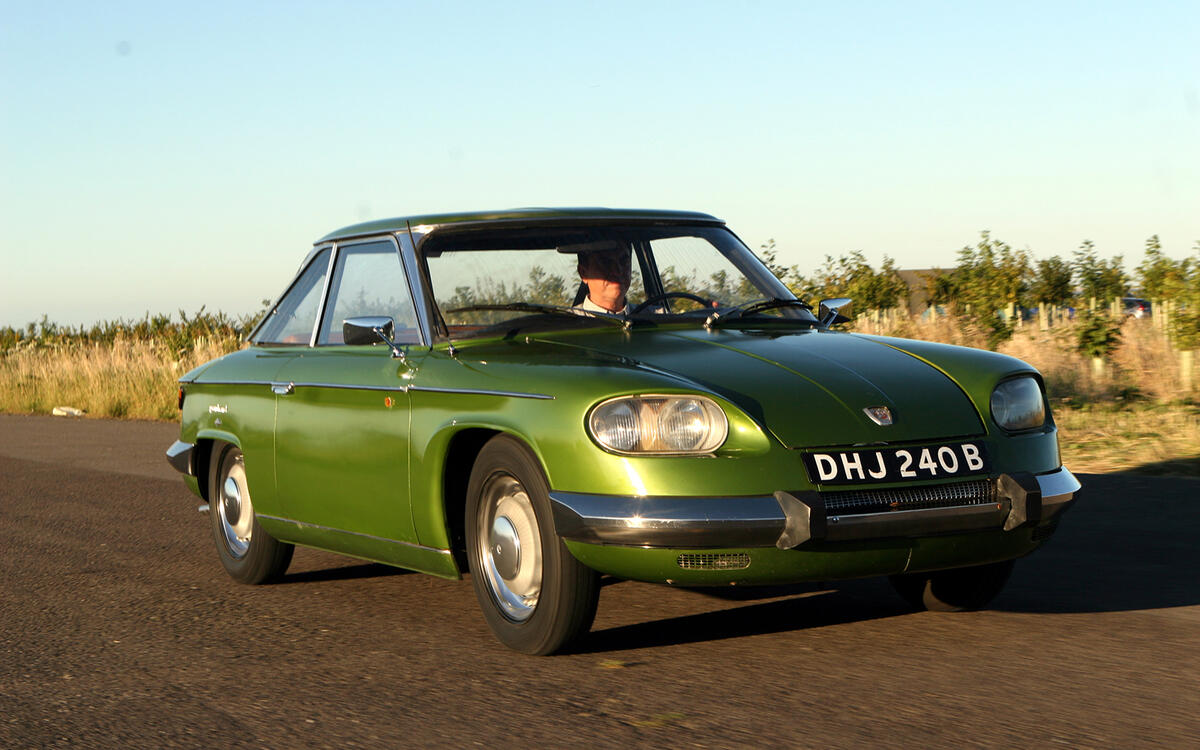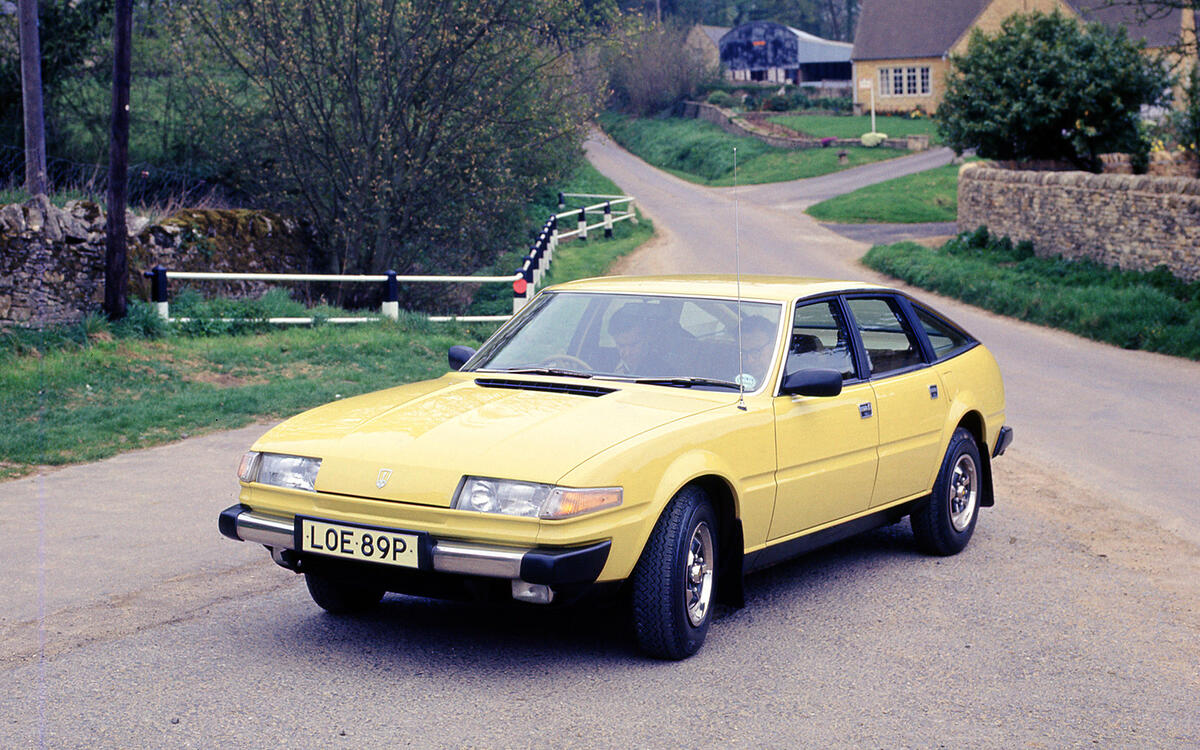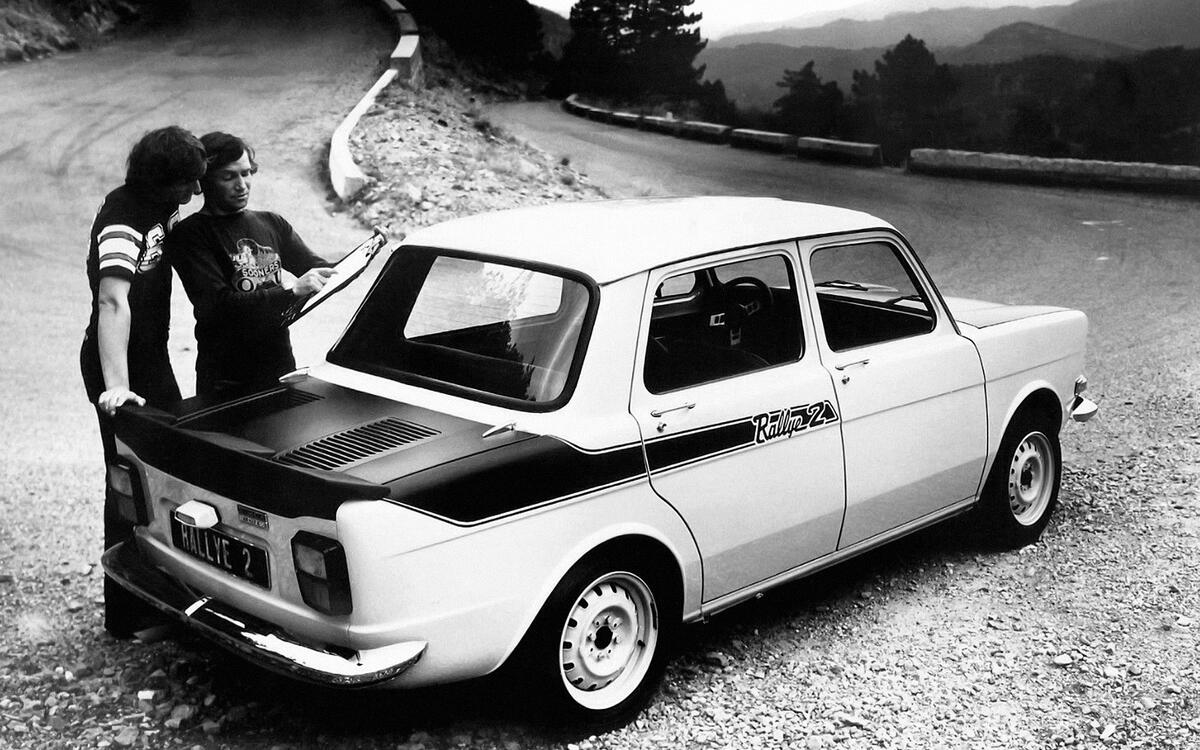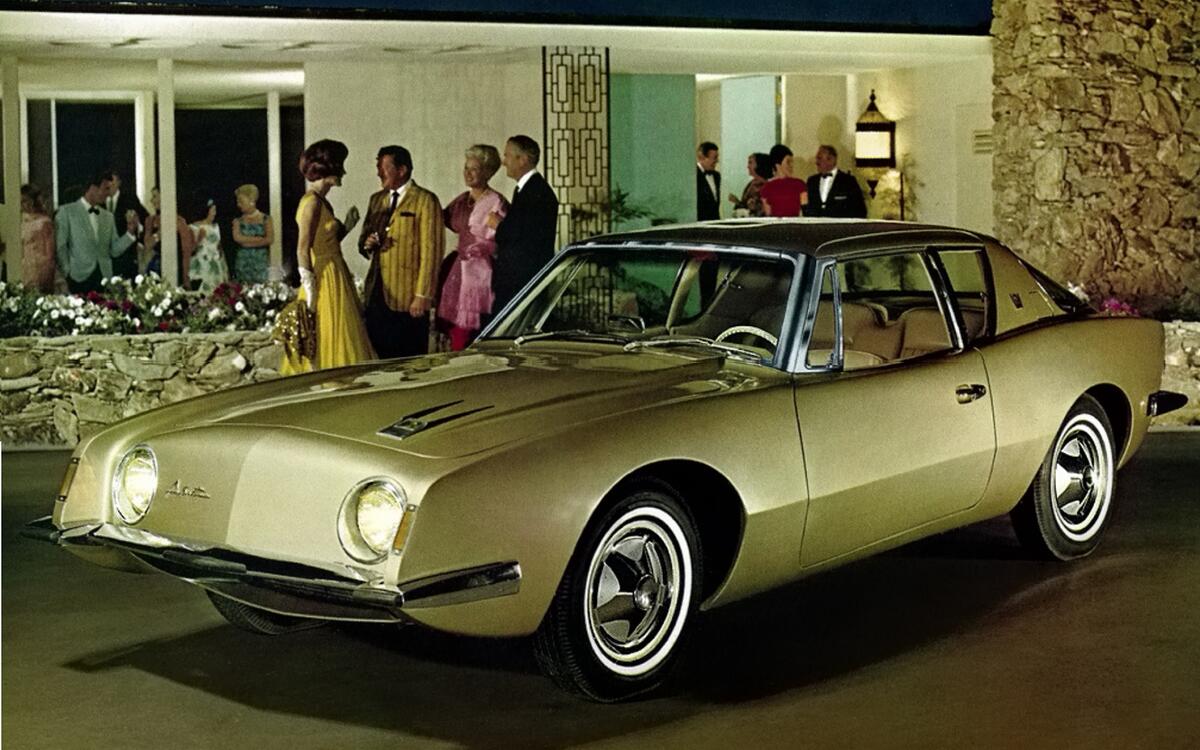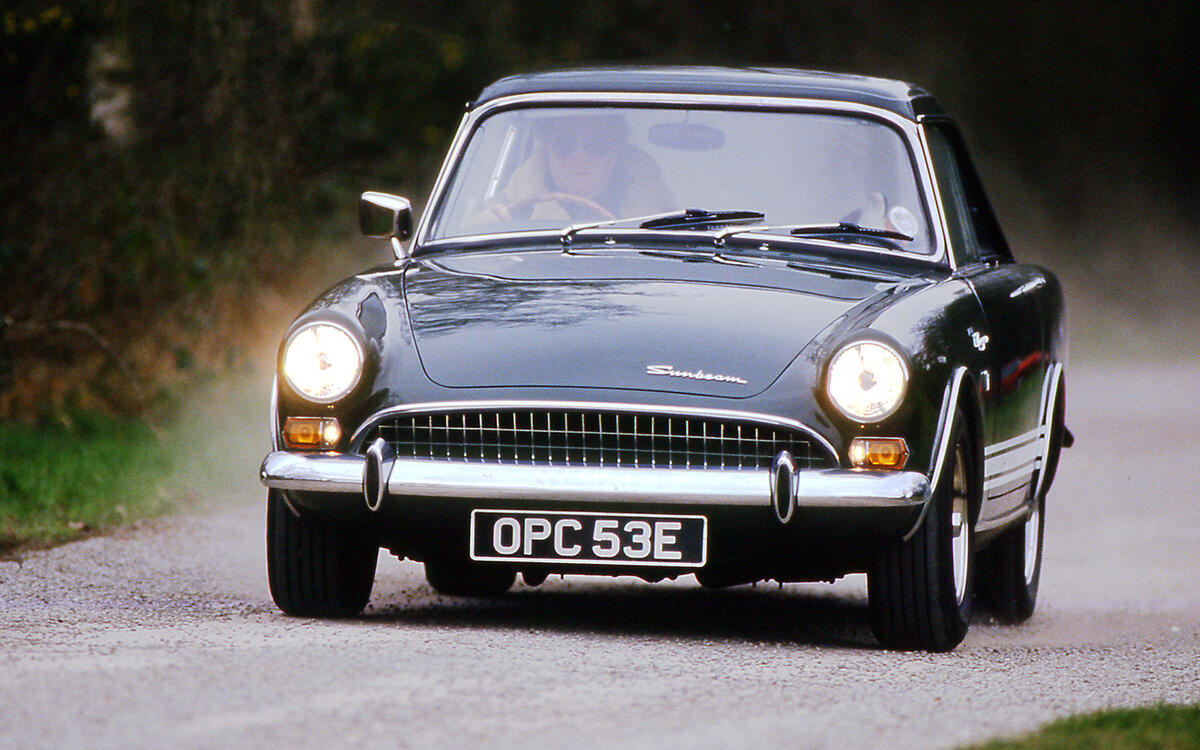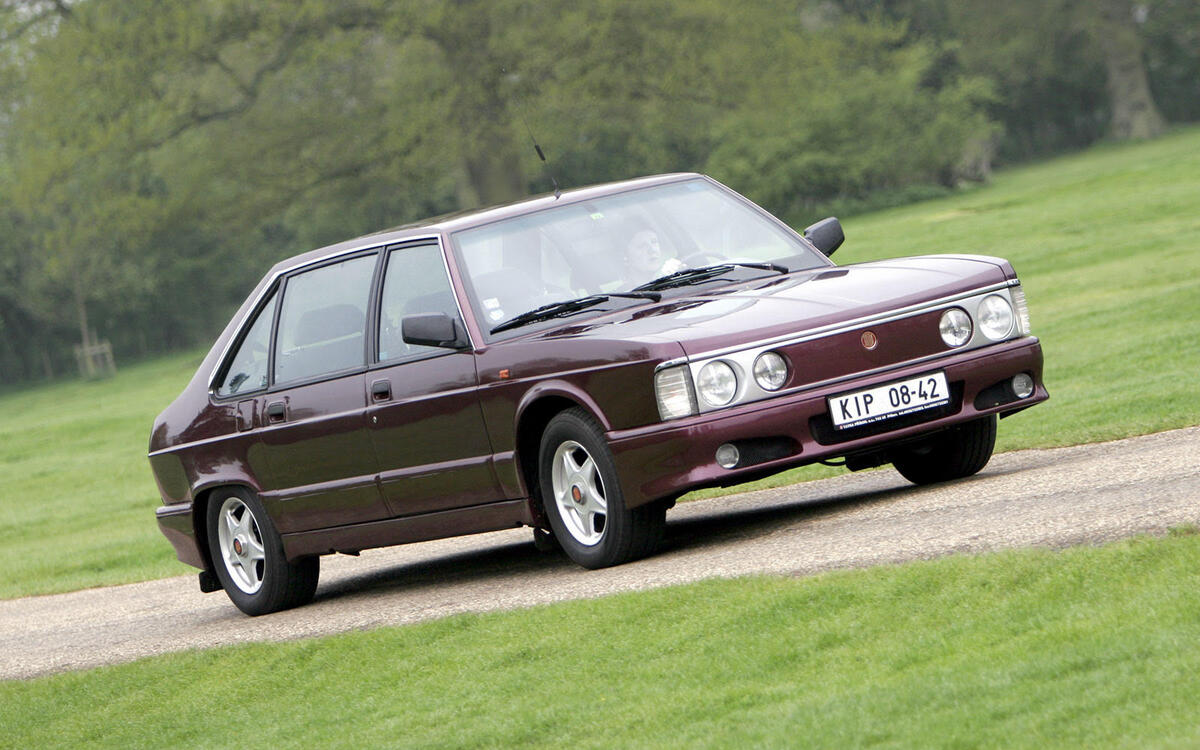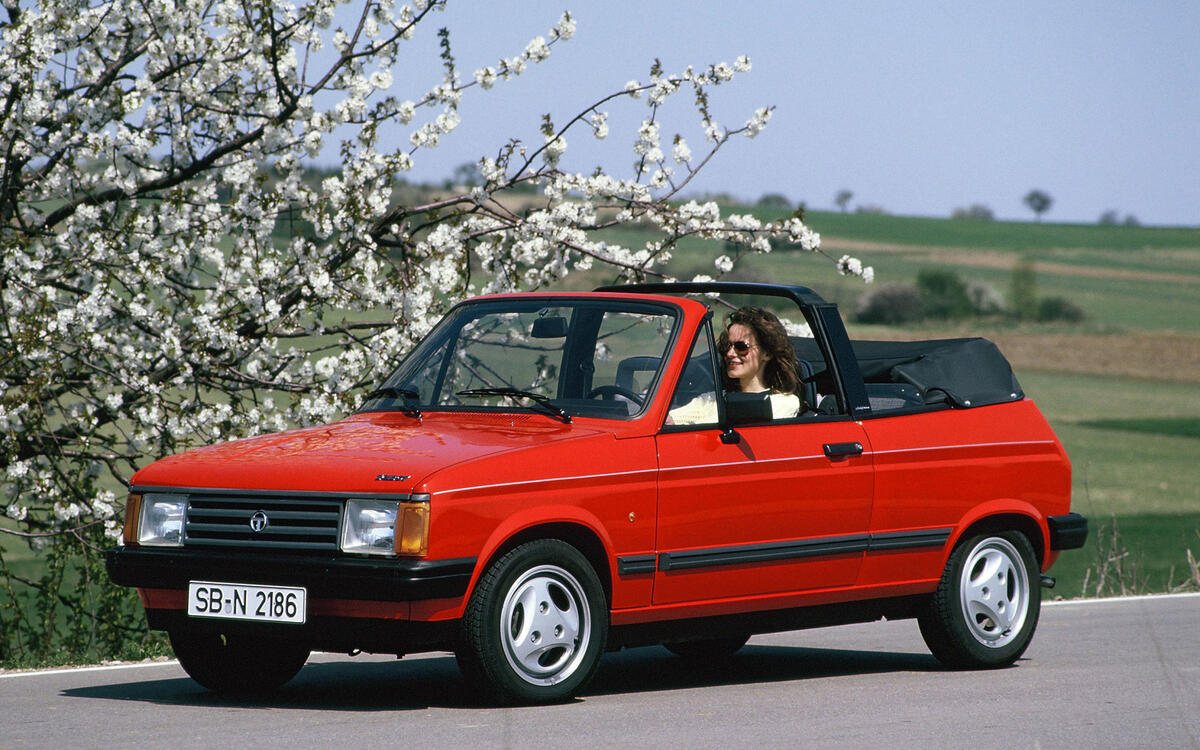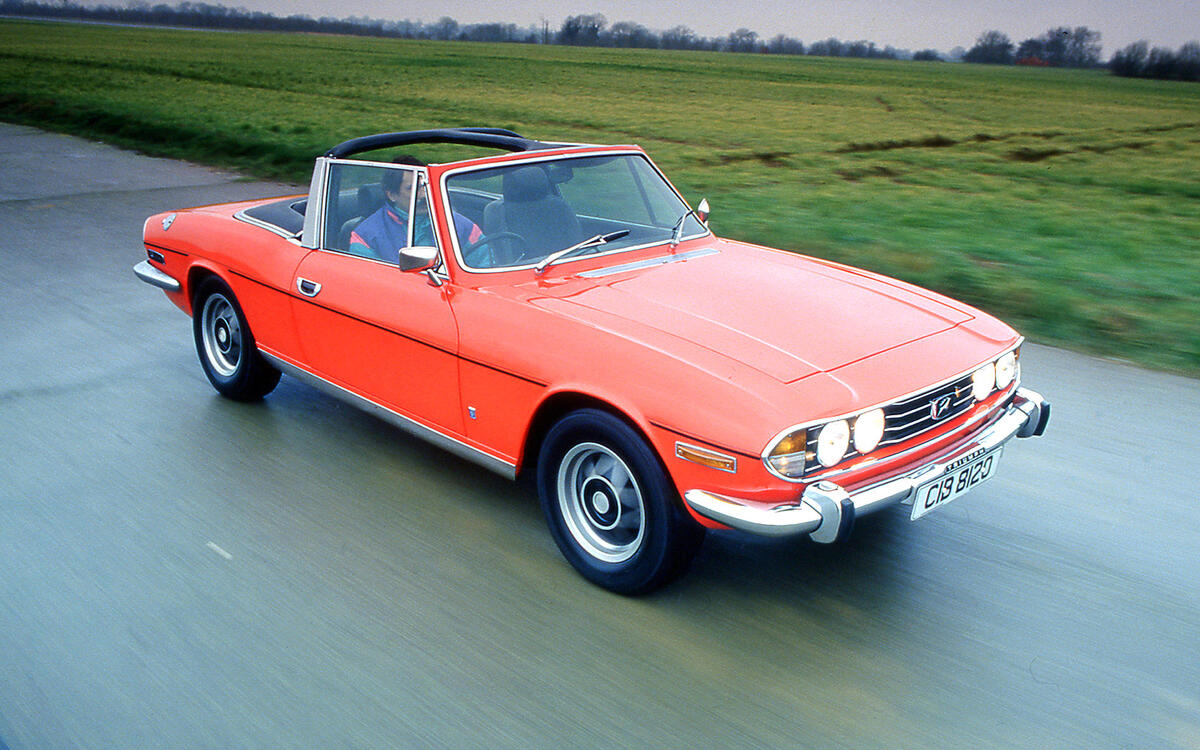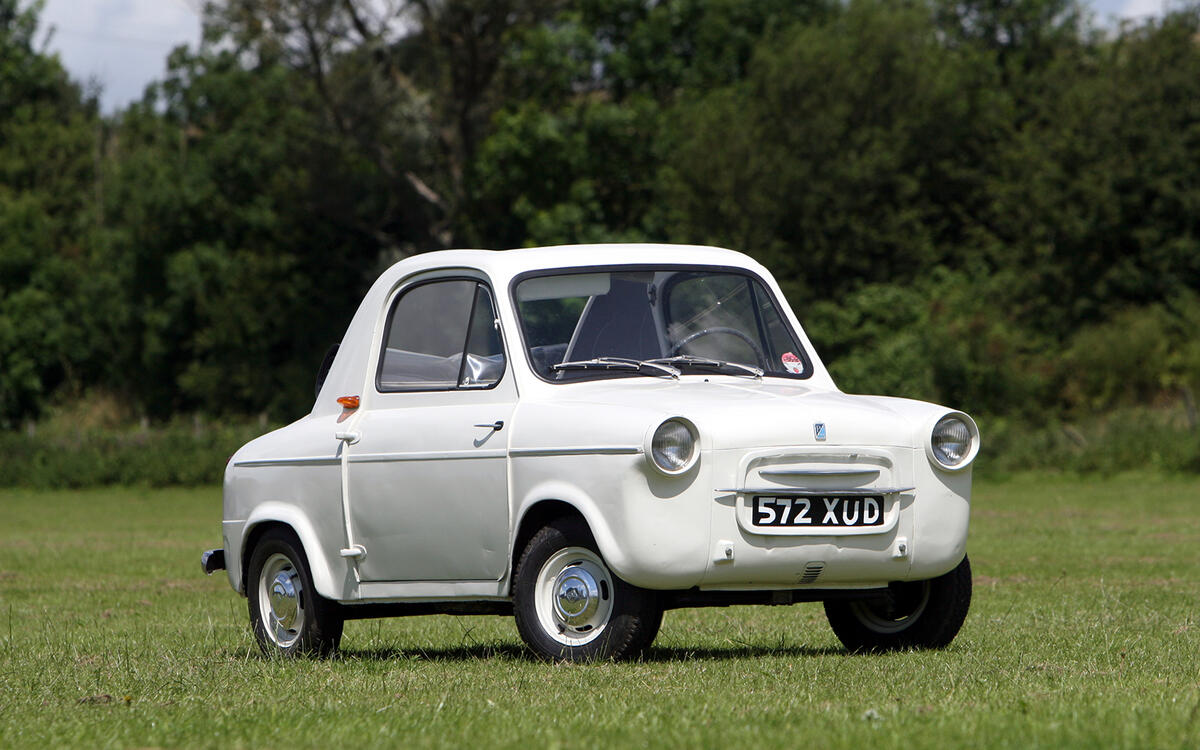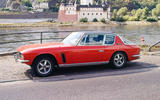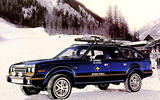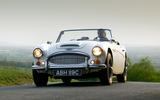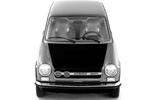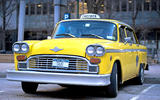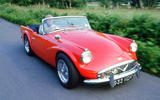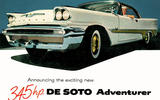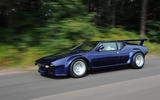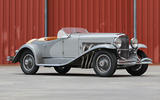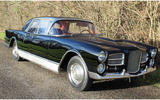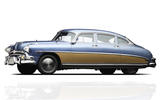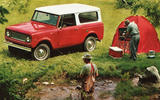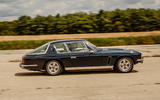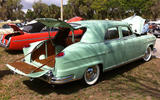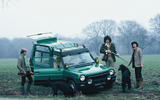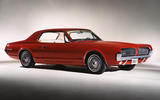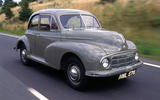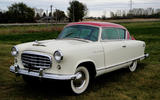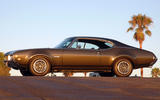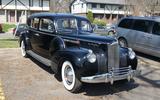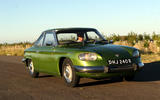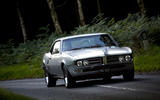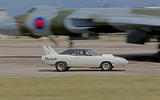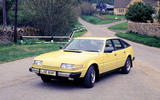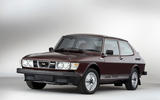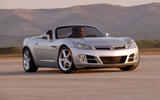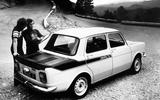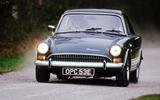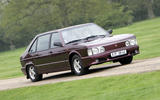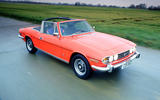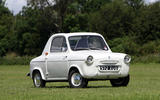 Slide of
Slide of
Times change, markets evolve and sometimes companies who rule the roost get a wheel stuck in a ditch and never recover.
Some of the brands who are no longer with us are gladly forgotten, while others left us wonderful memories of motoring days gone by, like the Jensen Interceptor (pictured). Join us as we look at some of the best cars built by carmakers no longer around:
 Slide of
Slide of
AMC: Eagle (1980)
AMC’s most notable contribution to the automotive edition of Noah’s Arc is the Eagle. It was a family car on stilts which relied on serious four-wheel drive hardware and ample ground clearance to tackle tough trails and knee-deep snow. In many ways, the Eagle was the modern crossover’s predecessor. Have you noticed the rising popularity of SUV-coupés? AMC did it first with the Eagle SX/4, and it had two doors like a proper coupé should.
So what happened to AMC? The company was majority-bought by France’s Renault in 1979, but AMC’s range of mostly smaller cars suffered as fuel became cheaper during the ‘80s. Renault CEO Georges Besse - who championed the firm’s American presence - was murdered in 1986 by terrorists, and his successors lost interest and sold the firm to Chrysler in 1987, when the AMC badge came to an end.
 Slide of
Slide of
Austin-Healey: 3000 (1959)
When it made its debut in 1959, the Austin-Healey 3000 stood out with a 3.0-litre engine and front disc brakes. The big Healey was a force to be reckoned with in European rallying events, but convertible-hungry buyers in North American scooped up most of the production run. It was one of the greatest British sports cars of its era, and it was continuously updated throughout the 1960s.
So what happened to Austin-Healey? The deal between Austin and Healey ended in 1972 after 20 years. There have been talks of a revival since, including under BMW’s ownership of Austin successor company Rover, but nothing appeared. The name itself is now owned by China’s SAIC. PICTURE: Austin-Healey 3000 Mk3
 Slide of
Slide of
Autobianchi: A112 Abarth (1971)
When Volkswagen takes credit for pioneering the hot hatch, it overlooks the Autobianchi A112 Abarth. Admittedly, the A112 was easy to miss due to its Matchbox-like dimensions. It was introduced in September of 1971 (before anyone knew what a Golf was) as a hotter version of Autobianchi’s successful Mini-punching model. Early models used a 57bhp four-cylinder engine, though power climbed to 69bhp later in the production run.
So what happened to Autobianchi? The company was a joint venture between bicycle-maker Bianchi, Pirelli, and Fiat. Fiat took full control in 1968, and then folded the operation into Lancia. The badge disappeared in 1995.
 Slide of
Slide of
Checker: Marathon
Michigan-based Checker started as a taxi operator rather than a taxi manufacturer but gradually got into the latter business in the 1920s, and by the 1930s was a big supplier of taxis to New York and other cities.
But its most iconic model was the Checker Marathon, first introduced in 1960. Built over a 22 year period, the yellow vehicles became synonymous with New York City, and variants were produced including a gigantic eight-door, 12-seater Aerobus version. Engines were initially straight-six cylinders from Continental, but these were swapped out with Chevy six-cylinders and small block V8s in 1965. It was simple and robust and because it barely changed its design in its life, operators of older vehicles did not feel embarrassed by them.
So what happened to Checker? Checker stopped making its taxi in 1982, and became a body supplier to GM instead. The recession of 2008-2009 killed the company however. In 2015, Checker unexpectedly returned from the grave and announced plans to build its first new model of the 21st century.
 Slide of
Slide of
Daimler: SP250/Dart (1959)
Once a supplier of motor-cars to royalty, Daimler grew out of the German company, but soon built its own models. The SP250’s engine had an interesting configuration; while being only a 2.5-litre, it was a V8. Elegant but interesting to look at, it was a spirited drive, good for 120mph, and determinedly different from its stately predecessors. Famously used to police speeds on Britain’s first motorway, the M1.
So what happened to Daimler? The company was sold to Jaguar in 1960, its cars eventually becoming badge-engineered Jaguar derivatives. The brand disappeared in 2007, though Jaguar still has the right to use the name in many markets, though given it’s now also the name of the parent company of Mercedes-Benz (it’s complicated…), this seems unlikely.
 Slide of
Slide of
DeSoto: Adventurer Coupé (1957)
DeSoto was started by Chrysler in 1928 as a way to challenge the emerging multi-branded behemoth General Motors that was already beginning to dominate the US car market; the brand, named after Spanish explorer Hernando de Soto (1500-1542), was initially the company’s value brand, though was pushed upmarket in the 1930s.
During the 1950s it established a clearer self-identity, and adopted Virgil Exner’s ‘forward look’ design philosophy in 1956. Not only did the Adventurer Coupé sport dramatically rising rear fins and flamboyant gold detailing, but packed a thoroughly decent 340bhp V8 punch into the bargain.
So what happened to DeSoto? The marque marched along nicely in 1957, shifting nearly 180,000 cars that year. But in 1958 America’s long post-war boom came to an abrupt end, and DeSoto sales more than halved in a sharp recession that among other things strangled Ford’s Edsel at birth. Chrysler needed to shift resources to producing compact cars like the Plymouth Valiant, so DeSoto was shuttered in 1961.
 Slide of
Slide of
De Tomaso: Pantera (1971)
Ferruccio Lamborghini went through the excruciatingly difficult process of developing an entire car from scratch to take down Ferrari.
Alejandro De Tomaso took a simpler route: he designed a breathtakingly gorgeous car and bought a V8 from Ford to stuff behind the seats. America’s appetite for performance cars ensured a steady cash flow for De Tomaso in spite of the Pantera’s quality issues.
Unreliability caused Elvis Presley to shoot his Pantera on numerous occasions, presumably as a punishment. It’s not known if this helped. Ford stopped importing the car to the United States in 1975, but production carried on for other markets (including Europe) until 1992.
So what happened to De Tomaso? De Tomaso merged with Maserati in 1975 and that brand was always more prolific, but De Tomaso sales carried on in small numbers until 2004 when the firm died. The trademark was sold on, and a De Tomaso concept car appeared at the 2011 Geneva motor show, but nothing’s been heard since.
 Slide of
Slide of
Duesenberg: Model J/SJ/SSJ (1928)
Huge, quick and correspondingly expensive, the Model J was a thoroughly splendid machine, powered by a 6.9-litre straight-eight engine that made 266bhp at a time when an average car was lucky to have 10% of that power. The eight had twin overhead cams and four valves per cylinder, track-bred features that were highly unusual on a production car during the 1920s. Motorists able and willing to pay about $8500 (roughly $127,000 in 2020 money) for a Model J could comfortably reach a 116mph top speed.
Unphased by the depression that set in following the 1929 Wall Street crash, the company trumped the J with the SJ variant of 1932, a supercharged derivative delivering an unholy 321bhp. Two shorter-wheelbase SJs named SSJ were also built and used by Hollywood stars Gary Cooper and Clark Gable.
So what happened to Duesenberg? The company had become part of Cord in 1926, but it was buffeted by the dire economy in the 1930s, and the costs of developing the innovative Cord 810/812 took the whole enterprise down in 1937. Gary Cooper’s SSJ was sold at auction in 2018 for $22 million, thus becoming the most expensive American car ever sold.
 Slide of
Slide of
Facel Vega: Excellence (1958)
The most luxurious French car you can buy today is about on par with a low-end BMW 5 Series – on a good day. It wasn’t always that way. Facel Vega (a brand favored by the world’s most image-conscious and self-adoring stars) built the Excellence to take the fight directly to Rolls-Royce. From its stately design with suicide rear doors to its hand-built interior, the Excellence easily lived up to its name. It served as the flagship for the brand, and for France’s entire automotive industry.
So what happened to Facel Vega? Competition from larger luxury-car rivals like Mercedes-Benz did the company no favours and it closed down in 1964.
 Slide of
Slide of
Hudson: Hornet (1951)
The Hudson Hornet dispels the myth that all American cars looked alike in the 1950s. Granted, it had big round headlights and enough chrome trim to seen from outer space, but the similarities with its peers stopped there.
It boasted a long, sloping roof line that flowed into a pontoon-like rear end. Were it built today, it’d be classified as a four-door coupé in the same vein as the Mercedes-Benz CLS. It was fast, too, spooled along by its poky ‘Twin H’ straight-six; the Hornet in modified form dominated NASCAR racing in the early 1950s.
So what happened to Hudson? It merged with Nash-Kelvinator in 1954, to form American Motors Corporation (AMC). The Hudson badge survived until 1957.
 Slide of
Slide of
International Harvester: Scout 80 (1961)
Formed from a merger in 1902, Illinois-based International Harvester (IH) specialised in, you guessed it, agricultural equipment like tractors and combine harvesters. IH got quite early into the business of making passenger vehicles by entering the pickup truck business as early as 1907, but its post-World War Two adventures into what became Sport Utility Vehicles would be immensely influential. The earliest example was the Travelall, introduced in 1953 and given four-wheel drive in 1956, and was something of a rival to the Chevrolet Suburban.
But the Scout 80 of 1960 was truly groundbreaking. Designed as a competitor to the Jeep CJ, it was a rather more sophisticated beast and as well as a pickup, it came with an (optional) permanent roof and two doors. This, then, was a Ford Bronco five years before the Ford Bronco, and the rest as they say is SUV history.
So what happened to International Harvester? As larger companies like Ford and GM (with the Chevrolet Blazer) muscled in on the Scout’s turf, IH found it increasingly hard to compete. It quit altogether in 1980 and retreated to commercial trucks and school buses. It sold its agricultural division to Case (now CNH Industrial) in 1984, while its truck remnants exist today in Navistar International. PICTURE: Scout 800A, 1969
 Slide of
Slide of
Jensen: Interceptor (1966)
The Jensen Interceptor provided buyers with an alternative to the archetypal British sports cars made by the likes of Triumph and MG. It catered to buyers who cared more about silky-smooth low-end torque than razor-sharp handling and low running costs. It died without a successor when Jensen collapsed under the burden of its financial troubles.
So what happened to Jensen? Jensen ceased operating in 1976. It was revived in 2001 with a new car, the S-V8, but promptly died again after just 20 were produced.
 Slide of
Slide of
Kaiser-Frazer: Vagabond
Industrialist Henry J Kaiser (1882-1967) specialised in making ships, not cars, and his shipyards churned out hundreds of ‘Liberty’ ships during World War 2. After the war, Kaiser spied an opportunity to get into the car business as the Big Three was being slow retooling its plants for civilian production. He teamed up with Graham-Paige executive Joseph Frazer (1892-1971) to accomplish his goal, and Kaiser-Frazer was born.
The Vagabond was strictly speaking branded Frazer, as the name was a sub-brand of Kaiser-Frazer. Launched in 1949, the Vagabond was a pleasant looking saloon that was also a hatchback. The rear seats could fold down – rare for the time – to create a 10-foot long cargo space. It was a wagon for people who didn’t want a wagon, and with 112bhp had a decent turn of speed into the bargain.
So what happened to Kaiser-Frazer? The company’s honeymoon didn’t last long as Detroit’s giants got their act together and Kaiser-Frazer’s sales dipped as production rose, creating a glut. The two partners fell out, and Frazer left in 1951. The company bought Willys-Overland in 1953, thus gaining the Jeep brand, but quit the (conventional) car business in 1955.
Willys was sold to AMC in 1970. Kaisers’s myriad other interests continued, and he died in 1967. If you’re American, there’s a fair chance today you get your healthcare insurance from the Kaiser Permanente company he founded.
 Slide of
Slide of
LaSalle: Series 50 Sedan (1934)
Consummate marketer and corporate constructor that he was, in 1927 General Motors boss Alfred P. Sloan perceived a gap between his Buick and Cadillac brands, so the LaSalle brand was born. Over the next few years it evolved as a more stylish and less expensive way to buy a Cadillac, and indeed most of its cars were built by Cadillac. It was innovative too; the car’s models in 1927 were among the first to be fitted with a radio, installed by the dealer not at the factory.
All LaSalles were elegant, and many of them were designed by GM design supremo Harley Earl, but for sheer overall presence we’d go for the Series 50 Sedan, complete with art-deco portholes on the bonnet, first introduced in 1934.
So what happened to LaSalle? In the late 1930s LaSalle was facing fierce competition from cross-town rival Packard, and in 1940 the decision was made to shutter the marque. The LaSalle name was used on numerous concept cars by GM after World War Two.
 Slide of
Slide of
Matra: Rancho (1977)
France’s Matra likened the Rancho to cooking a last-minute meal using only leftovers. Starting with the VF2 van, engineers installed a 80bhp 1.4-litre engine from the 1308 GT, brakes from the 1100 TI, and a four-speed manual gearbox from the 1307. While the outdoorsy design suggested it could go anywhere, four-wheel drive was never offered for cost and packaging reasons.
It was a trailblazer for the crossover class, but arguably a couple of decades too early. In an odd twist of fate, the Rancho’s intended replacement morphed into the original Renault Espace MPV.
So what happened to Matra? Matra in the automotive sphere became a contract manufacturer for Renault, but this work ceased in 2003, and some other assets were acquired by Pininfarina. The defence and aerospace part of Matra is now part of Airbus.
 Slide of
Slide of
Mercury: Cougar (1967)
Mercury launched the Cougar to fill the space between the Ford Mustang, which it shared its platform with, and the Ford Thunderbird. It became Mercury’s hero car by combining pony car performance with a larger dose of luxury. Later models attempted to recapture the spirit of the original, though they largely failed due to poor execution and performance best characterised as lackadaisical.
So what happened to Mercury? Following rationalisation after the financial crisis, Ford announced the end of the brand in 2010, and its last car, a Grand Marquis, was built in January 2011.
 Slide of
Slide of
Morris: Minor (1948)
Morris today is perhaps best known as the ‘M’ in MG, a company that blazed a trail after the second world war for lightweight sports cars in Britain, America and elsewhere. But in terms of Morris-branded cars, it’s hard to beat the Minor. While performance was sedate even by the standards of the time, steering and handling was impressive, and this was a primary way Britain got back on the road after World War Two. It later spawned van, estate and convertible versions, and more powerful engines that arrived later helped a lot. A cool 1.4 million examples were built until 1971.
So what happened to Morris? Morris merged with arch-rival Austin in 1952 to form the British Motor Corporation. In turn this merged with various other companies to form British Leyland Motor Corporation in 1968. The last Morris-branded car, the Ital, was built in 1984. Part of the old Morris factory in Oxford today produces the Mini for BMW.
 Slide of
Slide of
Nash: Rambler (1950)
Nash may be barely remembered today but this snappy little company fought hard for its small space of the US car market from its Kenosha, Wisconsin, base. It frequently showed its larger rivals how to do things, and never clearer than in its two-door Rambler, first released in 1950. Its unique selling point was that it was small and economical, yet had enough space for five. Yes, it was America’s first compact car, at a time when the Big Three were churning out ever larger machines, complete with grandiose accoutrements like tailfins.
Nash niftily avoided the ‘small and cheap’ label by only selling relatively upmarket versions, while performance was decent enough for-the-day from its 82bhp 2.8-litre straight-six; in 1951 we recorded a top speed of 81mph. In 1954, the Rambler became one of the first cars to feature a modern air conditioning system which didn’t take up vast amounts of space like on the Packard 180. But the size was the key, not least because some Americans could by then afford a second car, and a compact was just fine for that. The Big Three fought back, eventually, with Chevrolet’s Corvair which was troubled but huge-selling. Ford meanwhile responded with the similarly successful Falcon, and the Falcon’s bones gave us a little car called the Mustang.
So what happened to Nash? It merged with Hudson to create AMC in 1954, and the Rambler helped the new company to forge a new identity and strategy as a creator of attractive compact cars, and Rambler became a brand in its own right in 1958. The last Nash-badged car was built in 1958, while the Rambler name continued to 1969 in the US and 1983 in other markets like Mexico and the UK. A total of 4.2 million Ramblers or Nash Ramblers were made.
 Slide of
Slide of
Oldsmobile: 4-4-2 (1968)
The 4-4-2 started life as a performance-oriented option package on the Oldsmobile Cutlass in 1964. It proved popular enough to earn a promotion to a full-fledged model line in 1968 (pictured) when the name was tweaked to ‘442’. Oldsmobile collaborated with American tuner Hurst to build an even faster 442 with a 390bhp engine, upgraded brakes and a model-specific suspension.
For a few years, the numbers 442 were synonymous with no-nonsense performance. The 1972 redesign demoted the nameplate to option package status.
So what happened to Oldsmobile? Oldsmobile increasingly found its cars lost among those of GM’s other brands, let alone those from other carmakers. GM shuttered the marque in 2004.
 Slide of
Slide of
Packard: Custom Super Eight One-Eighty (1939)
Packard opened for business in Ohio in 1899 before moving to Detroit a few years later. It competed with Cadillac and later Lincoln at the high end of the developing US car market, and did so so successfully in the 1920s that it had the resources to survive the depression years afterwards, and develop ever more luxurious cars.
This magnificent machine pictured was as complex and convoluted as its official name, which we'll change to simply '180' for now. Introduced for the 1940 model year, it was a new top-of-the-range car by what many considered was America’s top-of-the-range car company. Power came from a 5.8-litre straight-eight cylinder engine that delivered 160bhp. Grandiose it may be, but it sought to lead the way in ushering in luxury equipment, and the 180 set new standards in terms of interior fabrics, leather and carpeting.
And it became not only the first car to have power windows – powered hydraulically (electric windows would not arrive until 1951) – but also, in 1940, the first production car to offer optional air conditioning. It was a rudimentary system that took up much of the boot space, but it was a start.
So what happened to Packard? The 180’s career was cut short by World War Two, so it ended production in early 1942. In common with other carmakers, it found it hard to compete with the hard-charging Big Three after the war, and merged with Indiana’s Studebaker as a defensive measure. This did not solve its problems and the last Packard was built in 1958 – and that was a badge-engineered Studebaker from Indiana; Packard’s famous Detroit plant closed in 1956.
 Slide of
Slide of
Panhard: 24 BT/CT (1964)
Ordinary motorists knew France’s Panhard for big, six-seater saloons; racers knew Panhard for ultra-light sports cars. The 24-series cars were an attempt at blending the company’s two identities. Offered with a short or a long wheelbase, the 24 brought Panhard’s unique breed of sportiness to motorists unwilling to commute in a stripped-down race car.
The 24 BT was longer than the 24 CT to offer more space for occupants riding in the back. Both variants received an air-cooled flat-twin engine which, thanks to an impressively aerodynamic design, propelled the 24 to freeway speeds in a relative hurry.
So what happened to Panhard? The car side of Panhard was sold to Citroën in 1967, and the marque as a carmaker died. The name lives on as a maker of military vehicles, ultimately owned by Volvo Group, the Swedish truckmaker.
 Slide of
Slide of
Pontiac: Firebird (1967)
General Motors didn’t allow Pontiac to build a two-seater sports car out of fear it would compete directly against Chevrolet’s Corvette. Instead, Pontiac received permission to launch a sports car based on the same platform as the then-new Camaro. Affectionately called “Screaming Chicken,” the Firebird carried on alongside the Camaro for four generations until it was sent to the automotive slaughter house in 2002.
So what happened to Pontiac? The Pontiac brand was discontinued in 2010 as GM rationalised its brands after its near-death experience in the 2008-09 global financial crisis.
 Slide of
Slide of
Plymouth: Road Runner Superbird (1970)
Muscle cars progressively grew out of mainstream buyers’ reach as they became more powerful and more expensive. The Road Runner was a return to the basic, enthusiast-approved formula of stuffing an immensely powerful engine in the unsuspecting body of a run-of-the-mill car. The Road Runner exceeded Plymouth’s wildest expectations during its first year on the market. Clearly, the time was right for a more affordable muscle car. The Superbird was a special edition Road Runner that arrived for just a single model year to allow the model to compete in NASCAR. They are hugely valuable today, and rightly so. Top power came from a 7.0-litre HEMI V8 that delivered 425bhp.
So what happened to Plymouth? Chrysler’s Plymouth brand died in 2001, and its cars either discontinued or rebranded as Chryslers.
 Slide of
Slide of
Rover: SD1 (1976)
The SD1 was the British company’s last attempt at building a true flagship model on its own. An avant-garde design and V8 power positioned it firmly at the top of the Rover range, placing it in the same ring as executive saloons from BMW and Mercedes-Benz. It inspired with a cutting edge design, confident handling and power that Britain’s police famously loved – all let down by the poor way they were plugged together.
So what happened to Rover? Rover marketed the Honda Legend-based Sterling make-and-model in the US in 1987-91, known as the Rover 800 elsewhere. Rover was sold to BMW in 1994. Having sold off Land Rover to Ford in 2000, it sold what was now MG Rover to a management consortium for £10 at the same time. MG Rover then went out of business in 2005. The Rover brand-name was sold by BMW to Ford for around £10 million in 2006, which sold the marque along with Land Rover and Jaguar to India’s Tata Motors in 2008.
 Slide of
Slide of
Saab: 99 (1968)
The 99 marked the beginning of a new chapter in Saab’s history. The Swedish brand ditched the 92-inspired design of earlier cars in favor of a more contemporary look characterised by a wrap-around windscreen, while a Triumph-sourced four-cylinder engine relegated the 96’s DKW-derived two-stroke engine to the history book once and for all. The 1978 Turbo remains the best-known evolution of the 99. It paved the way for every high-performance Saab from then on.
So what happened to Saab? All of Saab was acquired by GM in 2000. Saab was sold to Spyker in 2010, but ceased making cars in 2011. A Chinese firm called NEVS then bought Saab’s automotive assets, but it seems that the brand won’t be used on any vehicles; this is a complex and contentious area since the Saab name is still used by the military aircraft maker that bears the name; cars and planes were under the same ownership until 1990.
 Slide of
Slide of
Saturn: Sky (2006)
Saturn was set up in 1990 as a ‘new kind of car company’ from the biggest car company of them all, General Motors. Since GM only operated six brands in the US at the time, in its pomp it created a seventh in order to out-Japanese the Japanese car companies then making inroads into the US market, helped not least by their opening of US manufacturing facilities in the un-unionized sun-belt.
GM opened its Saturn factory in Memphis and established a new dealer network to simplify and demystify the car buying process, notably with ‘no haggle’ prices. But while the company’s main push was for fairly anonymous saloons, its best car was the Saturn Sky. This neat little roadster arrived in 2006 as a 2007 model, and featured power either from a 177bhp 2.4-litre four-cylinder or a rather tasty 260bhp turbocharged 2.0-litre. In the latter case, this was pushing around a car that only weighed 1350kg. When we drove it we reckoned it was a joy to drive, with ability to carve curves like a thoroughbred. Its only let down was a tiny boot with the roof down. It was sold in Europe as the Opel GT, but never in the UK as it was never tooled for right-hand drive.
So what happened to Saturn? GM very nearly went out of business in 2008-2009. As part of its survival plan, it committed to focusing only on its core brands and everything else would be sold or closed down. A deal to sell Saturn to Penske fell through, and the sun set on Saturn in 2010.
 Slide of
Slide of
Simca: 1000 Rallye (1970)
Abarth applied its magic to the Simca 1000, but it’s the three factory-built Rallye models that replaced Renaults and NSUs in the heart of enthusiasts seeking rear-biased driving thrills. Although it was aerodynamically-challenged, the 1000 was the ideal base for a high-performance saloon aimed at buyers on a budget. The first two editions of the Rallye were hot-rodded production cars, but the Rallye 3 was a full-blown street-legal race car released for homologation purposes. All three models are still widely used in hill climb events today.
So what happened to Simca? Simca was bought by Chrysler in 1970, and then PSA Peugeot-Citroën in 1979, and the badge died thereafter in favour of Talbot.
 Slide of
Slide of
Studebaker: Avanti (1962)
The Avanti was Studebaker’s last gasp before it vanished to the great junkyard in the sky. Developed in response to the Chevrolet Corvette, its Raymond Loewy-designed body was made out of fibreglass and dropped on a modified Lark chassis. Studebaker manufactured about 5,800 examples of the Avanti before it shut down for good, but five different entrepreneurs took turns building the car until 2006.
So what happened to Studebaker? Production at its main South Bend factory ceased in 1963, though operations continued at the company’s Canadian plant until 1966. The name is today owned by Federal-Mogul, an auto parts firm.
 Slide of
Slide of
Sunbeam: Tiger (1964)
Originally formed in 1901, Sunbeam disappeared after 1935, but was revived in some style in 1953 with the pretty and successful Alpine – which was perfectly timed to surf the 1950’s American open-top sports car wave. Wanting more power, Sunbeam enlisted Carroll Shelby to help fit a 164bhp 4.3-litre Ford V8 into the car. Twice as powerful as the Alpine but only marginally heavier, the car was a scintillating hit, shifting over 7000 examples in just three years.
So what happened to Sunbeam? Already part of the Rootes Group, Rootes was absorbed by Chrysler and then Peugeot. The Sunbeam name disappeared in 1981.
 Slide of
Slide of
Tatra: 613 (1974)
Like Porsche’s 911, the Tatra 613 retained its rear-engined configuration well after the layout went out of vogue. It shared this configuration with its predecessor, the 603, but its styling came to life on a blank sheet of paper. In an unlikely tie-up, Czechoslovakia-based Tatra enlisted the help of Vignale to forge a new design identity more in-tune with the times. It’s remembered as one of the most prestigious cars to come out of USSR-era Eastern Europe. You didn’t want to see it parked up in front of your house at two in the morning as it was a favourite of the KGB and its Warsaw Pact counterpart organisations.
So what happened to Tatra? It stopped making cars in 1999, but carries on as small-scale truck maker, and as such is the second-oldest vehicle producer in Europe after Peugeot, the Tatra company having been formed all the way back in 1850, when it produced horse-drawn carriages.
 Slide of
Slide of
Talbot: Samba Cabriolet (1982)
The Talbot Samba Cabriolet made Volkswagen’s Golf Cabriolet look like a Rolls-Royce. Based on one of the cheapest cars in Europe, it gave young, cash-strapped motorists a way to go topless without breaking the bank. It also attempted to provide the Talbot brand its own image by separating the Samba from the Peugeot 104 and the Citroën LNA it shared DNA with. Peugeot’s 205 CJ took the torch from the Samba Cabriolet after Talbot went six feet under.
So what happened to Talbot? When PSA Peugeot-Citroën bought Chrysler Europe in 1979, it used the Talbot badge on former Chrysler and Simca models. Use on cars continued until 1987, and on vans until 1994.
 Slide of
Slide of
Triumph: Stag (1970)
While some would choose Triumph’s successful and pretty line of TR sports roadsters from the ‘50s and ‘60s, we reckon the Stag deserves more credit as the British V8-powered would-be answer to the Mercedes SL. Moodily handsome though blighted by reliability issues, it was a nice drive when it worked.
So what happened to Triumph? Triumph was run down by owners British Leyland, and the oddball TR7 was the last car developed in-house. That was followed by the 1981 Honda-based travesty that was the Triumph Acclaim, and the name ended in 1984. Somewhat intriguingly, the Triumph Cars name today belongs to BMW.
 Slide of
Slide of
Vespa: 400 (1957)
As an auto manufacturer, Vespa is dead. Known internationally for scooters, the Italian brand dipped its toes in the automotive pond when it introduced one of the smallest cars on the European market at a high-profile event in Monaco. The 400 competed in the same handkerchief-sized arena as the Goggomobil and the Fiat 500, which hit the market just a few months before its Vespa-badged rival.
The 400 – an allusion to its 393cc engine – was manufactured in France. One and done, Vespa never built another car.
So what happened to Vespa? Nothing, in a word. It continues to make motor scooters; its parent company Piaggio sold 393,000 two-wheeled machines in 2018 using a variety of brands which also include Aprilia and Moto Guzzi.
Car companies didn't always die because they made poor cars. Some were great, and these we think were the best
Advertisement



